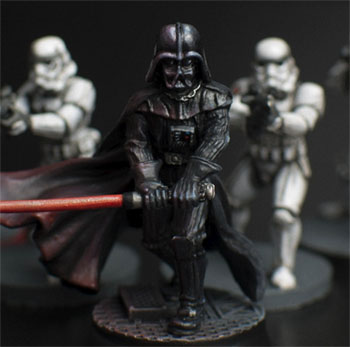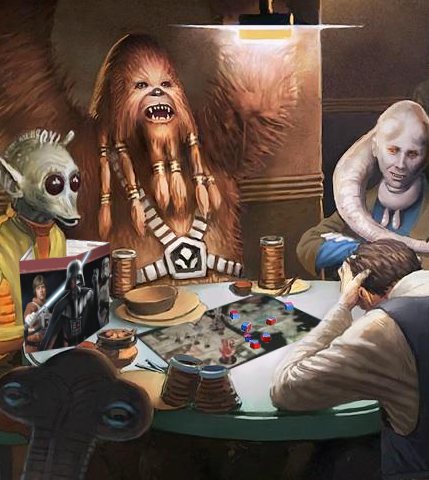 Hello and welcome again to The Force Does Not Throw Dice, the very irregular ETE feature devoted to tabletop roleplaying games in the galaxy far, far away. It’s been a long time since my last piece but, after seeing the warm reception that my Star Wars RPG tweets usually get, I’m going to try to change things around and turn this into a more regular feature. So expect more RPG rants in the near future!
Hello and welcome again to The Force Does Not Throw Dice, the very irregular ETE feature devoted to tabletop roleplaying games in the galaxy far, far away. It’s been a long time since my last piece but, after seeing the warm reception that my Star Wars RPG tweets usually get, I’m going to try to change things around and turn this into a more regular feature. So expect more RPG rants in the near future!
Last month we asked Twitter for suggestions for future features, and the topic of this month’s piece was inspired by Mario Escamilla’s question on the use of VIPs in the game. So first let’s define a VIP as any canonical non-player character, from a main character like Luke Skywalker to a secondary character like Officer Thanoth. Using canonical characters in your game is, to many gaming groups, intrinsic to roleplaying in the Star Wars galaxy. If we used the jargon from the old GSN Theory classification method, we could classify Star Wars RPG as a “setting simulation” system: although there can be a variety of approaches and many divergent campaigns can be played, one of the most common objectives is to make the game feel like it’s set in the Star Wars universe. Some Game Masters find that, alongside using known worlds and technology, one of the easiest ways to make sure that the game is unequivocally set in the galaxy far, far away is to have an established character guest star in it.
Yet using VIPs in your Star Wars game is not as simple as it sounds, and can bring some unexpected headaches if not thought through. Although all published settings come with their own canonical characters, be it the wizard Elminster from Forgotten Realms or the various corporate chairmen from Shadowrun, few can claim to have any characters as ingrained in popular culture as Han Solo or Darth Vader. So let’s take a look at some common challenges and mistakes when it comes to using VIPs. Let’s ask ourselves a few questions.


